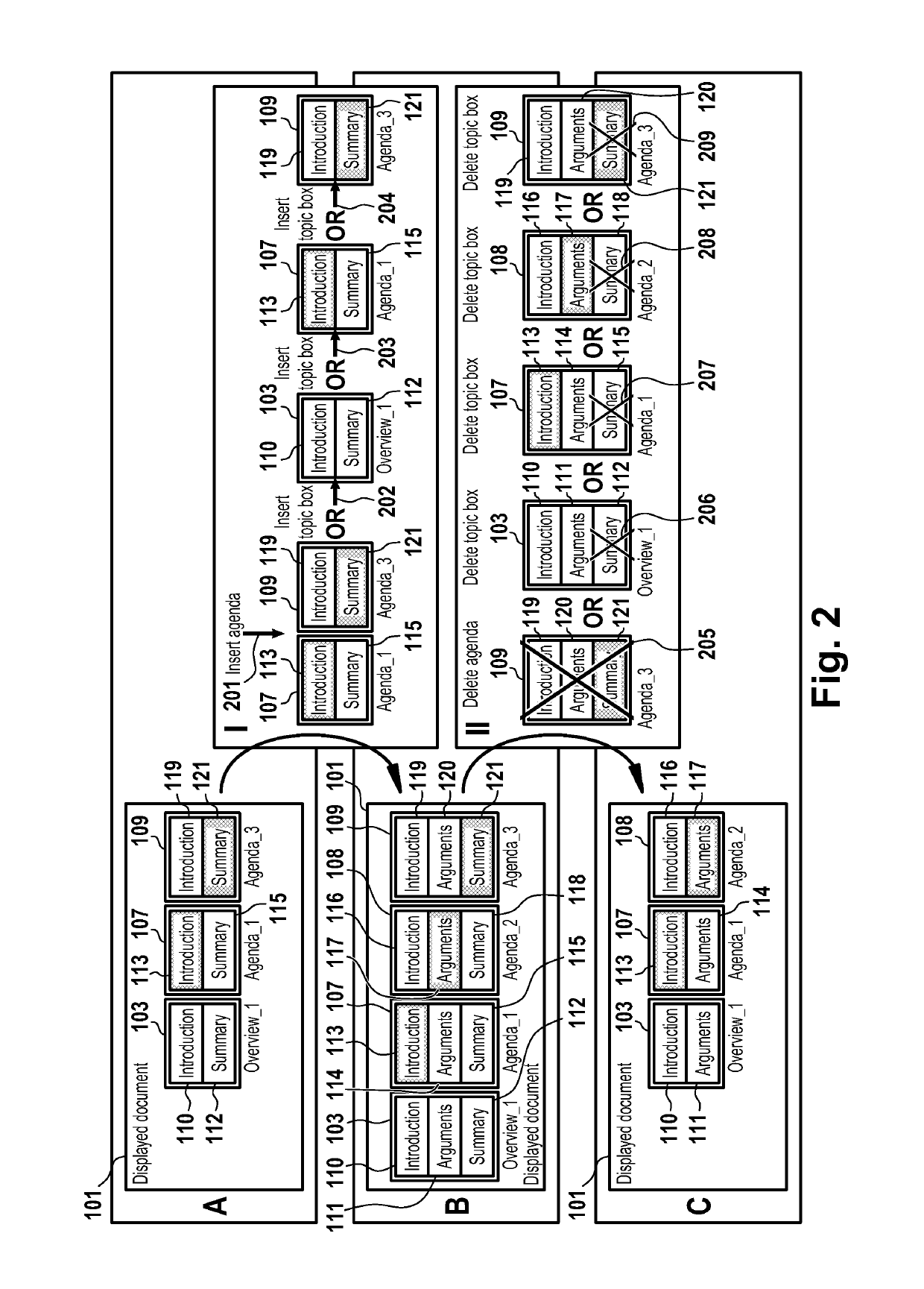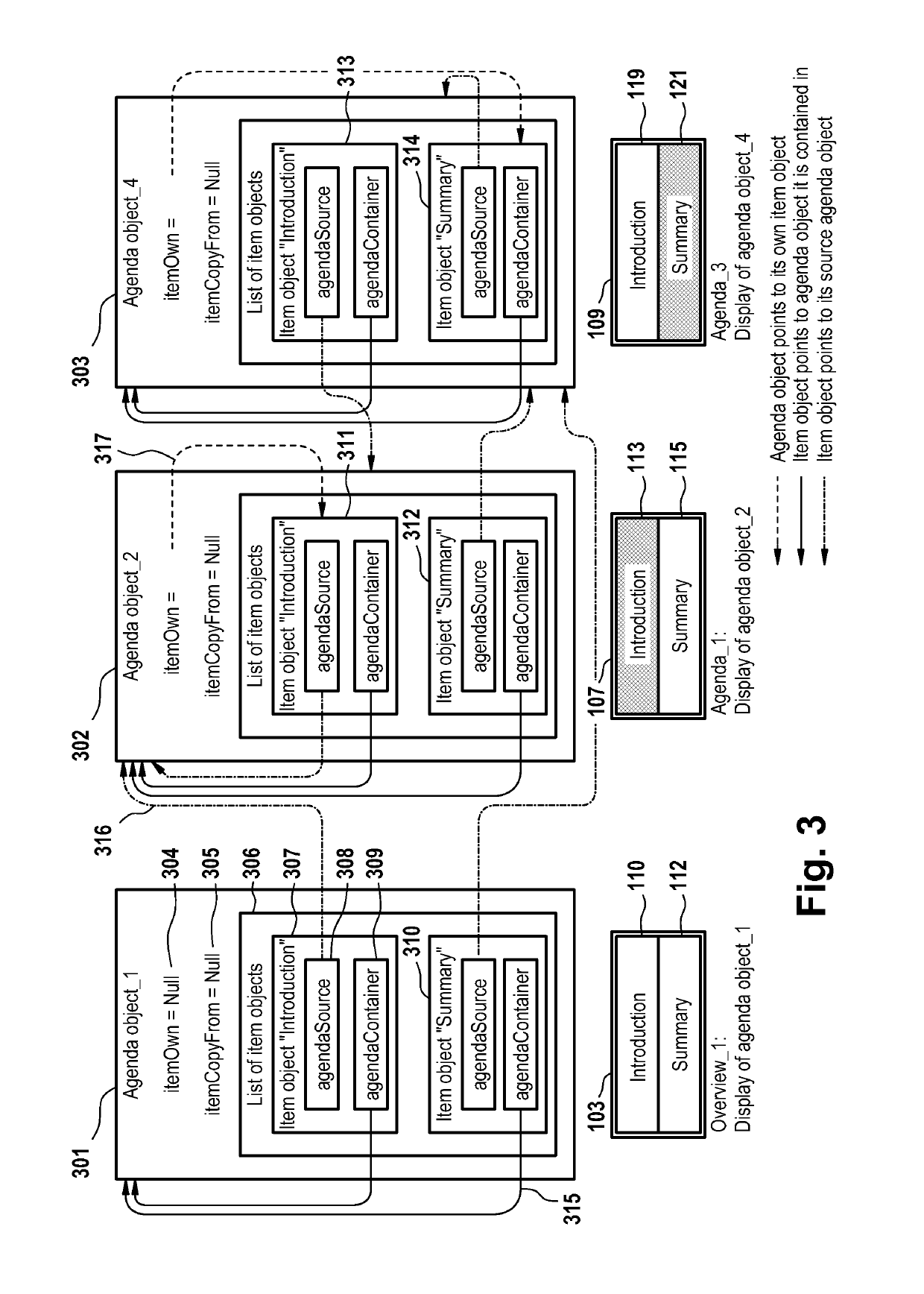Method, computer readable storage medium and computer system for efficient agenda drafting, synchronization and display
a technology of computer system and agenda, applied in the field of data processing, can solve the problems of inability to propagate the changes introduced to the table of contents to the chapter headers within the text document, and the applicability of programs that cannot be efficiently used to create and edit the table of contents,
- Summary
- Abstract
- Description
- Claims
- Application Information
AI Technical Summary
Benefits of technology
Problems solved by technology
Method used
Image
Examples
Embodiment Construction
[0043]FIG. 1 depicts visual document elements of an electronic document: agendas, overviews and topic boxes. FIGS. 2-4 and 6 provide a combined view of visual document elements and their corresponding data objects according to a preferred embodiment of the invention. FIG. 5 maps user commands to computer implemented methods executable e.g. by a plug-in of a presentation program or a presentation program itself. FIG. 7 focuses solely on the ‘refresh agenda objects’ method of the preferred embodiment. In order to illustrate the relation of the visual objects to their corresponding data objects according to a preferred embodiment of the invention, a mapping of those two concepts is depicted in table 1. To simplify matters, the visual document elements described in table 1 are contained in a document comprising only one single document section.
[0044]
TABLE 1Visual document elementData objectDisplayed document:Document object:A visual representation of anAn implementation of the electroni...
PUM
 Login to View More
Login to View More Abstract
Description
Claims
Application Information
 Login to View More
Login to View More - R&D
- Intellectual Property
- Life Sciences
- Materials
- Tech Scout
- Unparalleled Data Quality
- Higher Quality Content
- 60% Fewer Hallucinations
Browse by: Latest US Patents, China's latest patents, Technical Efficacy Thesaurus, Application Domain, Technology Topic, Popular Technical Reports.
© 2025 PatSnap. All rights reserved.Legal|Privacy policy|Modern Slavery Act Transparency Statement|Sitemap|About US| Contact US: help@patsnap.com



